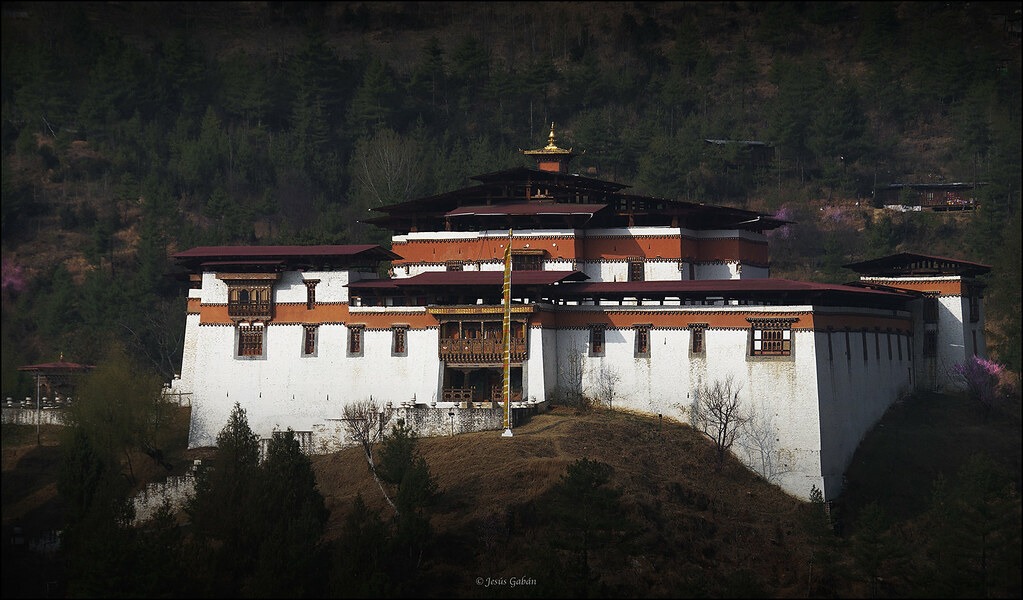Bhutan’s First dzong
The oldest dzong in Bhutan is the one in Simtokha.

According to legend, the site of the Dzong is said to have been a lookout spot for a demon that disappeared into the nearby rock. Hence the name Simtokha which translates into Simmo (demoness) and do (stone).
Built in 1629 by Zhabdrung Ngawang Namgyal, the Dzong was also of strategic significance to protect the valley from invaders and served as an entry and exit point to the eastern parts of the kingdom through the pass in Dochula.
What is worth noting is that the dzong, which is also called the Palace of the Profound Meaning of Secret Mantras, is said to be the first dzong built in Bhutan. It was also the first dzong to be built by the Zhabdrung and the first structure to incorporate both monastic and administrative facilities.
During its construction Simtokha Dzong was attacked by an alliance of Tibetans and five Bhutanese lamas from rival Buddhist schools who were opposed to the Zhabdrung’s rule. The attack was repelled and the leader of the coalition, Palden Lama, was killed. In 1630 the Tibetans again attacked and took control of the Dzong. The Zhabdrung regained control when the main building caught fire and the roof collapsed, killing the invaders. Descriptions of the original Simtokha Dzong were provided by the two Portuguese Jesuit priests who visited the Dzong in 1629, on their way to Tibet.
The third Druk Desi, Mingyur Tenpa, performed expansion and restoration of the Dzong in the 1670s. It has been enlarged and restored many times since, most recently by a team of Japanese architects. The Dzong is about 60 sq metres, and the only gate is on the south side (though the original gate was on the westside.)
The utse is three storeys high, and behind the usual prayer wheels there is a line of more than 300 fine slate carvings depicting saints and philosophers. The large central figure in the central lhakhang is of Sakyamuni, flanked by the eight bodhisattvas. The dark murals inside this lhakhang are some of the oldest and most beautiful in Bhutan.
In the western chapel are statues of Chenresig, green and white Taras, and an early painting of Zhabdrung Ngawang Namgyal. The protector chapel is dedicated to the protectors of Bhutan, Yeshe Goenpo (Mahakala) and Pelden Lhamo.

